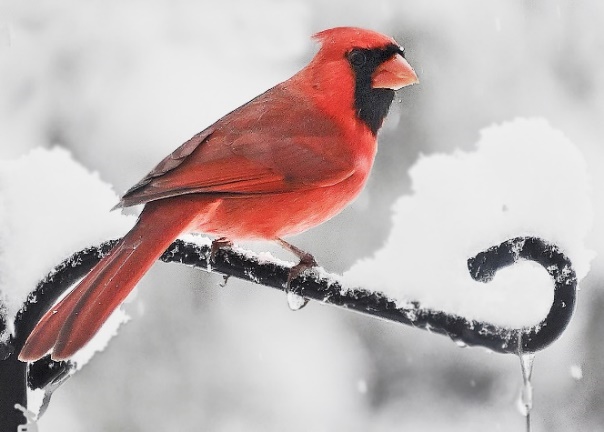
Rural Perspectives: Cardinals stay in our area throughout the year
by Diane Constable

filled with sunflower seeds. Photo credit Diane Constable
The male northern cardinal (Cardinalis cardinalis) with its crimson red coloring and black mask is one of the most recognized birds in our area. It is named after the red robes worn by Roman Catholic cardinals. The female and juveniles are an olive-fawn color with a dab of red and with juveniles having black beaks.
Adult northern cardinals are about 9 inches long and weigh 1.8 ounces; they live for about three years in woodland edges, brushy areas and in our neighborhoods.
Cardinals stay year-round, and it is a harbinger of spring to hear the territorial calls by both males and females in late February. They are very protective of their territory and the males will fight reflections of themselves in windows, car mirrors and hubcaps.
Mates for life, the pair create a nest 1-10 feet off the ground in dense shrubs, vines or tree branches. The female is the main builder and lays four or five eggs in April. The male brings nest materials and food to her. Once the eggs hatch in about 12 days, they both feed the chicks. When the chicks are about 11 days old, they leave the nest, and both parents continue to protect and feed them.
Cardinals eat a wide variety of food, including caterpillars, grasshoppers, beetles and other insects, various nuts, fruits, berries and seeds. They also will visit bird feeders filled with sunflower seeds. The pigment in the berries produces the male’s bright red color.
Fun Fact: In many cultures, the cardinal is a positive symbol of good luck, hope, spiritual strength and renewal, or a visit from the spirit world.
Diane Constable is an avid photographer. She serves on the Unadilla Township Planning Commission and is a member of the township’s Parks and Recreation Committee. Diane also enjoys her dogs and gardening.



